It isn't easy being green, a wise frog once said. But, as far as eco-friendly packaging options go, we're here to help you make informed decisions and make it a little easier.
There are all types of ways to package and cushion your wares for transport these days. It isn’t, at first glance, entirely apparent whether a certain type of packaging is truly detrimental to the environment or not though.
To be good stewards of this planet while also doing good business, we can make packaging choices that help keep things clean and green. It’s all about sustainability.
Types of sustainable packaging
What is sustainability?
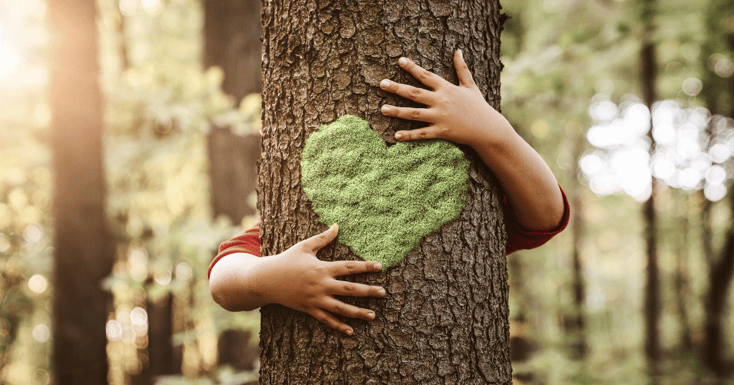
Sustainable packaging is one of the many ways small businesses can be profitable yet good for the planet
In short, sustainability is all about maintaining ecological balance. For the sake of keeping the Earth liveable for humans and flora and fauna alike. At its most basic, it’s the idea that we shouldn’t take more than we give.
Simple, right?
But, in reality, we’ve found it challenging to keep that balance. Humans take up a lot of space on this planet and have not been adequately concerned with the consequences of that.
What is sustainable packaging?
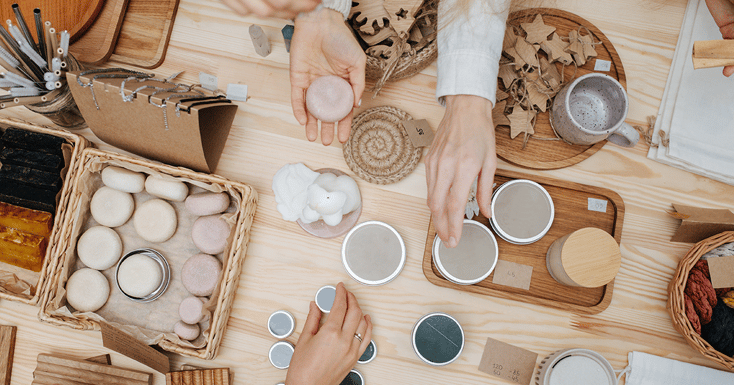
Eco-friendly packaging materials are an overlooked but important aspect of being a sustainable business
Recently, with the glowering threat of climate change hovering over us, many organizations and companies have heeded the call for a clear focus on sustainability.
Within the realm of eCommerce, one major concern is how wasteful packaging is. From decades of careless use of non-recyclable packing materials, mountains of waste have needlessly piled up in landfills to slowly degrade and off-gas tons of greenhouse gasses.
So, let’s take a deep dive into the world of sustainable packaging to see how we can make a smaller environmental impact. It all starts with a life-cycle assessment.
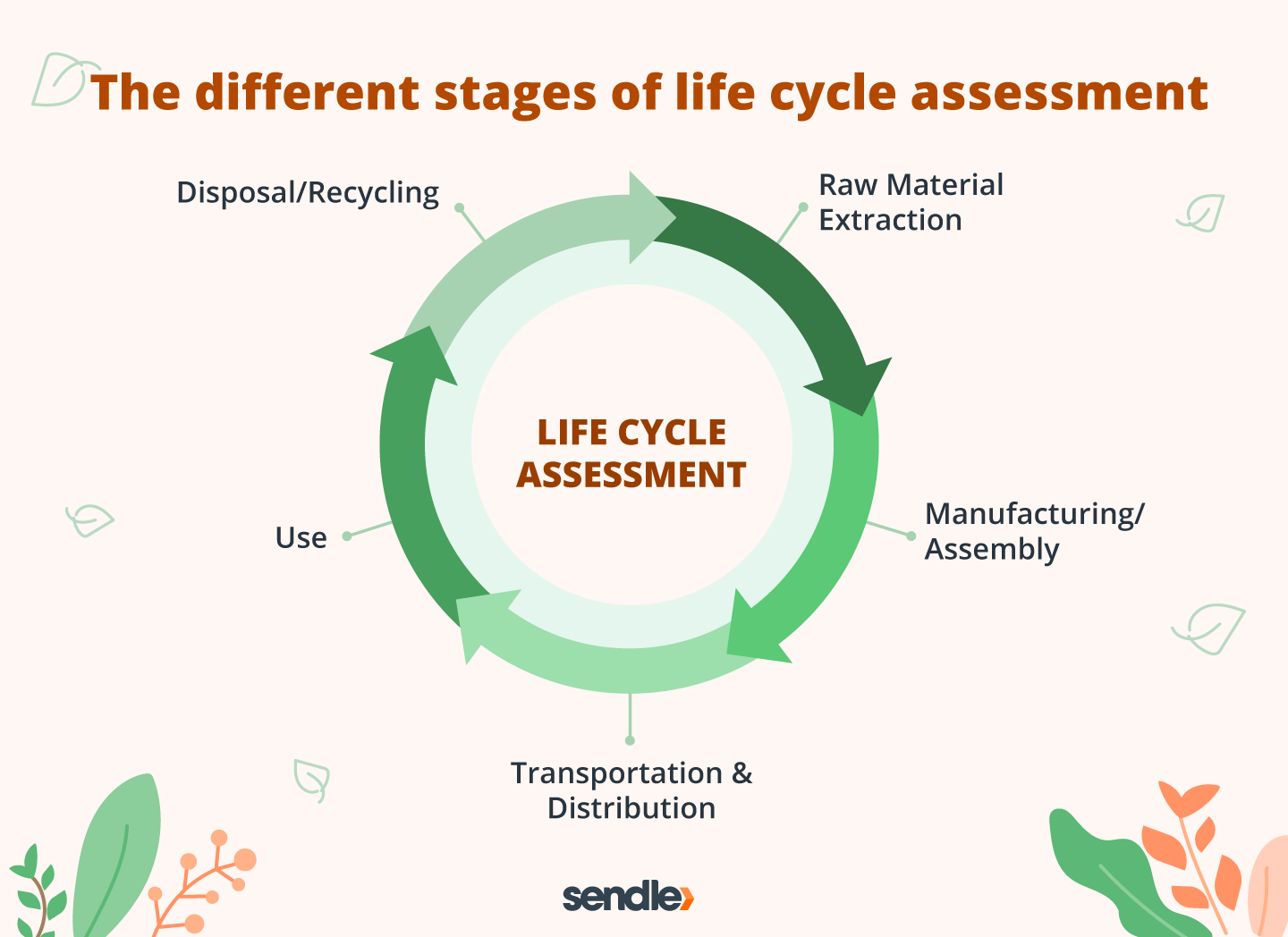
Infographic based on STiCH
What is life-cycle assessment?
Judging the sustainability of any particular material starts with a life cycle assessment. From creation to (hopeful) decomposition, what is the sum total impact of that box or filler? That’s what aims to be quantified through careful analysis of its entire life cycle.
Beginning at the proverbial cradle with the extraction of raw materials—followed by material processing, fabrication, distribution, and use—to the grave of recycling, disposal, or decomposition, all parts of the life-cycle come together to illustrate the full impact of any particular packaging type.
A group that puts a lot of thought into this and brings together the major voices in sustainable packaging is the Sustainable Packaging Coalition. They're worth checking out.
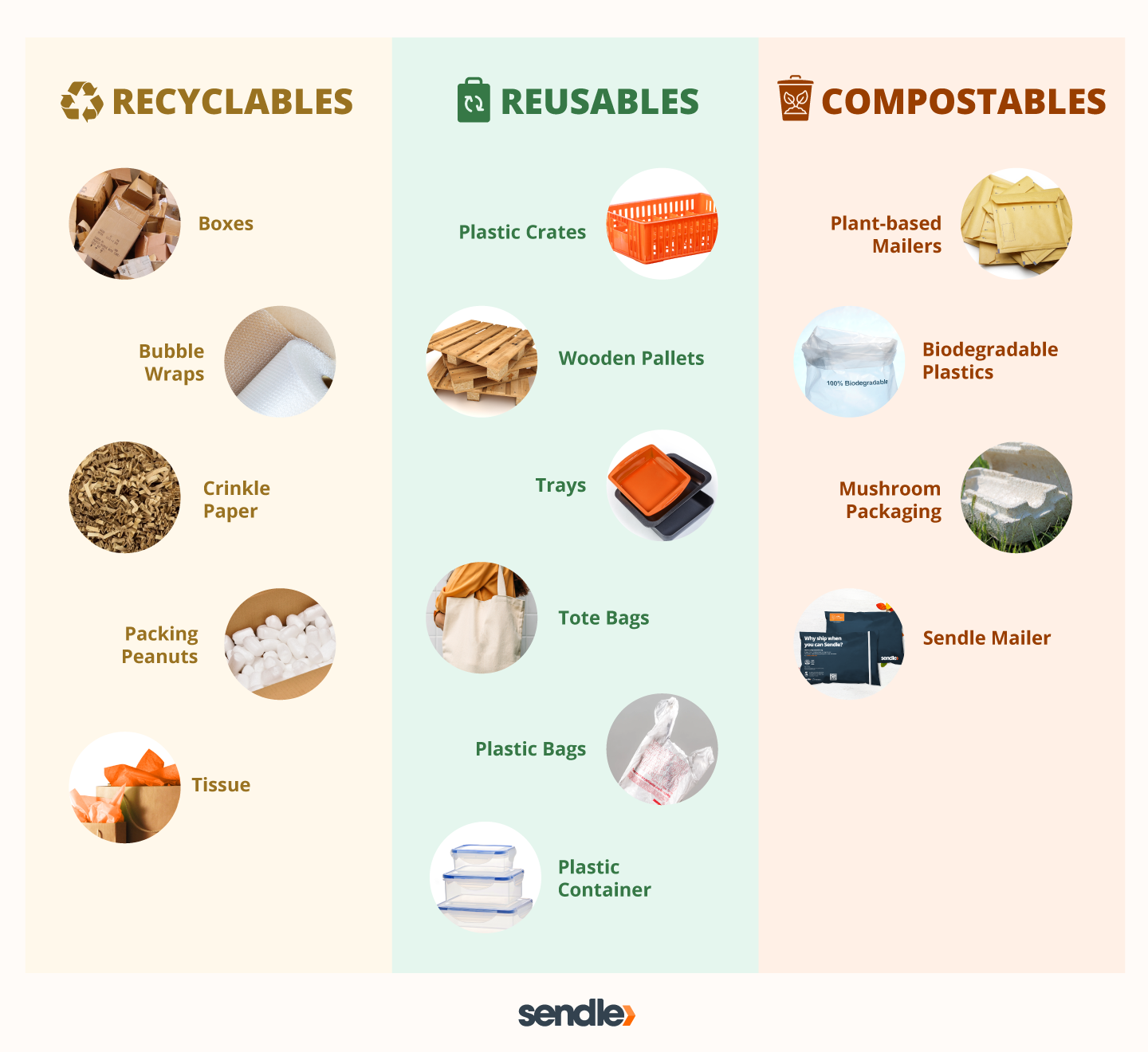
Reduce, Reuse, Recycle, Compost
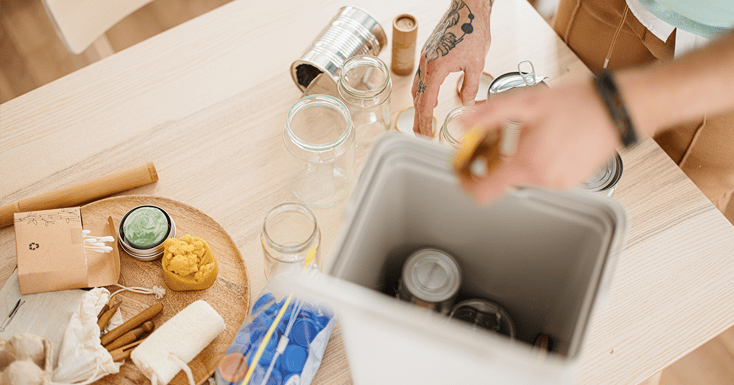
A circular economy starts with local businesses and households using sustainable packaging
When trying to be as eco-conscious as possible with your shipping decisions, you want to start with the material you use to cushion and encase your precious merch for its big ride.
There are a ton of options out there, ranging from eco-unfriendly to super sustainable. Luckily for you, we’ve put together this comprehensive guide to put your packaging decisions in perspective and help reduce your carbon footprint.
First, let’s look at the main categories that packaging may fall under—recyclable, reusable, and compostable.
1. Recyclable packaging
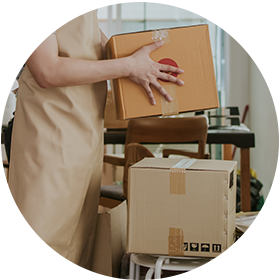
Cardboard boxes, molded pulp forms, and paper-based filler are used extensively to get small package shipments from point A to point B. The box and the cushioning within get thrown in the big recycling bin outside.
That paper goes to a facility to get soaked, chopped, cooked, pulped, strained, cleaned, bleached, and reformed. Many of the cardboard boxes you use are at least some percentage made up of recycled material.
Adding to the eco-friendliness of recycled and recyclable paper packaging is the fact that most, if not all, of it can completely biodegrade at the very end of its cycle. It is best if this biodegradation occurs through the process of composting instead of in a landfill.
Why? The anaerobic environment of a landfill produces a greater quantity of the more dangerous methane gas than the aerobic environment of compost piles.
2. Reusable packaging
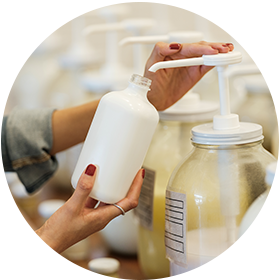
Some of the more common reusable packaging examples in the world of delivery and shipping are kegs, glass milk bottles, pallets, shipping containers, gas cylinders, and plastic totes. This is a major part of the idea of a circular economy, which aims to completely eliminate waste.
The application of these items trends away from the middle of the road. They are used both by the larger freight shipping operations (think pallets and containers) and smaller local businesses with their own more complex delivery and return system (think kegs, milk bottles, and plastic totes).
For regular shipping from business to consumer, the feasibility of reusable packaging depends on the consumers’ willingness to return the container their shipment came in. But, for the applications where it does work, the packaging gets a lot of use across its lifespan.
When it is no longer usable, it must be discarded or, if possible, recycled. While initially more costly, reusable packaging is likely more cost-effective in the long run.
3. Compostable packaging
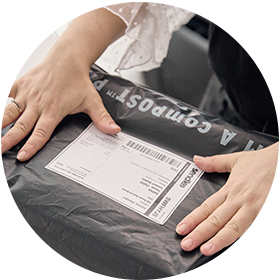
Compostable packaging is an easy way to reduce single-use plastics
The ideal world does not include mounds of non-biodegradable garbage or massive islands of plastics choking our sea life. It is preferable that our waste just decay away quickly and feed the soil.
With compostable packaging, that dream is reality.
While cardboard technically can be composted, it doesn’t really work at scale. Plus, consumers aren’t tossing full boxes in their home compost heap (and they shouldn’t be). Largely, compostable packaging at scale will rely on city compost and yard waste programs to fully close the waste cycle.
There is also some built-in confusion. Are biodegradable materials compostable? Not necessarily. Home compostable vs commercially compostable? Big difference.
Commercially compostable materials need to be sent to a facility to be properly decayed, one that would be part of certain cities’ waste systems. As more cities adopt these programs, the easier it will be to maintain a robust compost culture.
If compostable packaging ends up in the landfill instead of the compost heap, it will still degrade faster than other materials. So, worry not. Compostable materials include plant-based packing peanuts, compostable mailers, bioplastics, and mushroom packaging.
Types of sustainable packaging
1. Corrugated cardboard
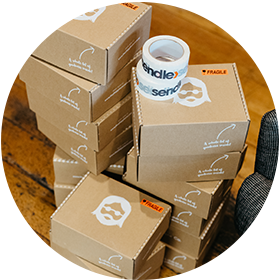
Cardboard is used to ship over 90% of all products in the US, so it certainly belongs at the top of this list. There are a lot of reasons to use cardboard boxes for shipping, from their singular utility and multitude of options to their affordability and exceptional reusability.
There are positives and negatives to the use of cardboard. While much of it is produced from recycled paper, it is also produced from trees (sustainably forested) that require massive amounts of energy and water to process. Luckily, boxes can be made from up to 100% recycled material.
Cardboard boxes are very reusable as long as they retain their form, extending their life cycle. Plus, they can be recycled up to 25 times before they have to be composted or thrown out. If it is able to be composted instead of thrown into the landfill, the overall methane emissions will be significantly reduced.
2. Packing paper
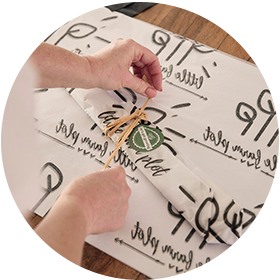
So, you have your recycled box all ready for packing. Obviously, you need to cushion your product to prevent rattling and breakage. To fill that void between product and box, you use one of a variety of options in the world of void fill (aptly named). Void fill is a filler material, used to close up the free space in your shipping box and lock products in place. Paper is a popular choice for this.
You can get fat rolls of kraft paper which you can manually bunch up into cushiony balls to stuff strategically around your merchandise. You can also buy shredded paper to treat your product to a cozy nest of protection. For your more delicate items, there’s tissue paper to wrap gingerly about those ceramic and glass whatnots.
Finally, you have the machine-managed paper packaging, where a noisy robot crunches kraft paper or puffs up paper bubble wrap in order to make your packing that much more quick and efficient.
Paper packaging is super recyclable and can also be composted (an especially good option if your city has a composting program). Further, the packaging is often reusable.
3. Reusable plastic tubs
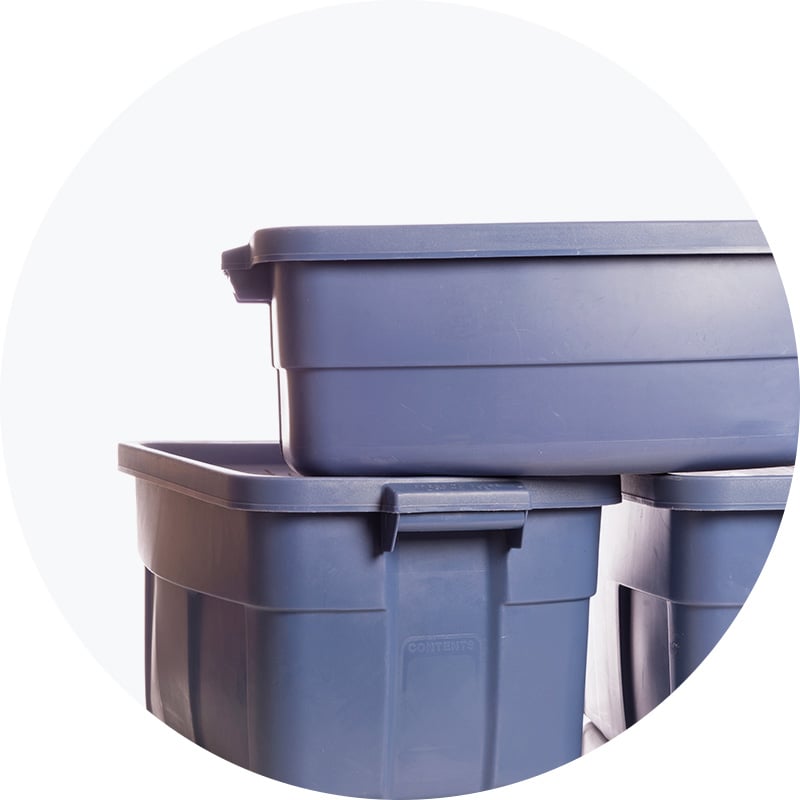
While impractical for most eCommerce businesses, plastic tubs are a super sustainable packaging option for businesses that can implement the complex distribution and return system required for consumer adoption.
Community Supported Agriculture programs (CSAs) are one type of business that can and does successfully use plastic tubs. Since they are regionally based and have their own distribution system in place, returns are made easy for their customers.
Plastic tubs are also great for internal use to and from distribution depots and retail locations of larger businesses.
While plastic tubs are initially more expensive, their cost becomes minimal over the lifetime of their use. Same for their sustainability—assuming they live a long life, plastic tubs replace a great deal of cardboard boxes that may only be used once before returning to the energy-intensive machinery of recycling.
4. Mushroom packaging
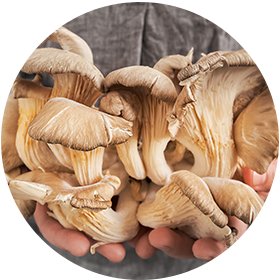
A product of thinking way outside of the box, mushroom packaging is still in early days. By growing the mushroom’s root system—called mycelium—into the required shape and baking it to become inert, a type of protective cushioning can be created which is entirely compostable at the end of its cycle.
One of its more obvious and exciting applications is for the replacement of polystyrene packaging, which fills up our garbage bins and sticks around for much too long. Other great applications are grow-it-yourself lampshades, thermal insulation, and building materials.
One major company pioneering its use for packaging their products is Ikea.
5. Compostable mailers

Compostable is a loaded word. As was mentioned above, some items are only commercially compostable, while others can merely be tossed with the rest of your scraps by the garden. The good news is that the packaging will make clear whether it is commercially compostable or home compostable.
Compostable mailers vary in material. Some are made with renewable plant materials (e.g., corn husks and straw) that can be both commercially and home compostable (these are bioplastics, covered below). Others are made of recycled paper products that are best composted commercially.
Sendle now sells home compostable pouches made from corn starch, polylactide (made from corn and other plant waste, and PBAT). After you ship, it becomes delicious food for worms!
6. Biodegradable packing peanuts
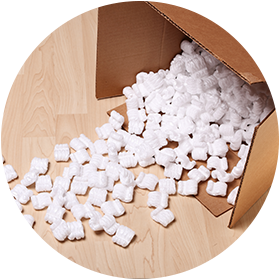
Traditionally, packing peanuts have been made out of polystyrene—a non-biodegradable, non-recyclable plastic pollutant. With these adverse environmental implications, starch-based packing peanuts came on the scene in the 1990s.
These eco-friendly substitutes are made from non-toxic plant sources, such as grain sorghum and corn starch. Completely biodegradable and dissolvable with water, the waste footprint of this newer style of packing peanut is vanishingly small.
7. Popcorn
Yep, you read that right. Popped corn.
Some sellers have chosen to take sustainable packaging into their own hands by using the bulk bins at their local grocery store.
By air-popping the corn (leave the oil out of this), you are left with a lightweight void fill that'll protect your fine goods from all the jostling they endure during their travels. Note that it may not work as well for heavier items, though.
At the end of its journey, your customer can simply toss the popcorn in the compost. While it may look delicious, we would not recommend eating any packaging material.
If you are shipping internationally, popcorn may not be an option. Make sure you research customs requirements on that one.
8. Bioplastics

An umbrella term for a number of bio-based plastic materials, bioplastics were created to displace traditional plastics made from non-biodegradable fossil-fuel plastics. While not all bioplastics are biodegradable, there are no petroleum-based plastics that are.
Bioplastics are largely used in food packaging—as well as bags, utensils, and straws—but its applications are vast, replacing regular plastics wherever they are used. PLA (polylactic acid) is the most common bioplastic used to replace polystyrene, polyethylene, and polypropylene. It is usually made from the sugars found in sugarcane, corn starch, and cassava.
Where bioplastics are made from edible parts of plants, they compete with human consumption and require a greater share of land to be used. So, while they reduce emissions of greenhouse gasses and use of nonrenewable resources, bioplastics also negatively impact the environment through water use, land use, deforestation, and the use of pesticides.
As with many things, there is a balance to strike to determine the ecological benefit of a product. Bioplastics come in many forms and their impact will vary from type to type. From a packaging and shipping perspective, both the compostable packing peanuts and compostable mailer fall under this category.
Whichever materials you use, ship sustainably with Sendle
As you can see, there are a lot of packaging options for businesses that want to do it sustainably. And more types of green packaging are coming out all the time.
We’re in an age of sustainability awareness and sustainability innovation. No doubt this list will grow with the exciting innovations to come. Until then, choose your packaging wisely. To take it a green step further, ship with Sendle–shipping that’s good for the world.


